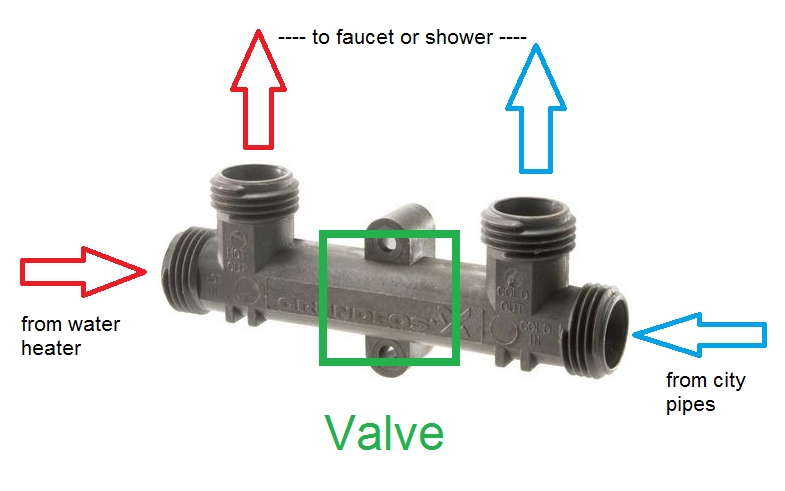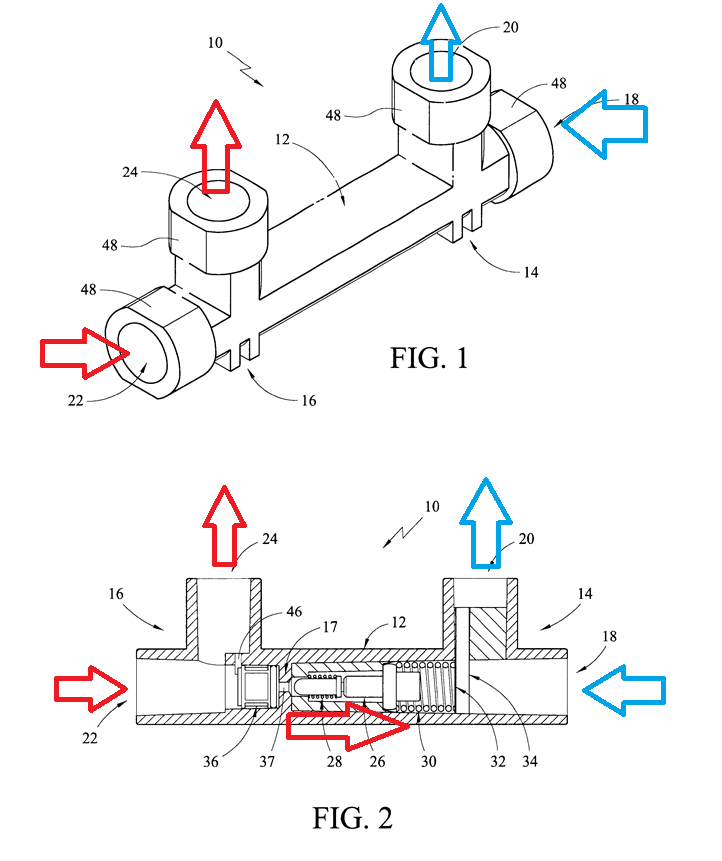Before we find out how a sensor valve works, we need to learn what a sensor valve does.
A sensor valve acts as a passing guard between the hot and cold water pipes below your faucet. The purpose of a hot water recirculator is to make sure that your pipes always have hot water in them. In order for your hot water spout to produce hot water, all of the cold water that has been sitting in the pipe must be pushed out of the way.
Well, in order to push that water out of the way, it must have somewhere to go. So where does it go? It goes through the cold water pipes and pushes water back into the city’s water lines.
The sensor valve is the device that lets the cold water move backwards into the city pipes at a certain temperature, and then stops the water from flowing that way once it reaches the appropriate [hot] temperature.
By the way, sensor valves aren’t too expensive (view price on Amazon). That’s the best price you’ll find anywhere.
Ok, now I know what it does, how does it work?
When metal gets hot, it expands. When metal cools down, it contracts. This material property is the core (literally and figuratively) of a sensor valve.
When the water coming in from the ‘supposedly’ hot side isn’t actually very hot, the metal valve contracts which opens up a path for the water to flow. When this path is open, the hot water heater in tandem with the hot water recirculation pump push actual hot water through the pipes. When the actual hot water reaches the valve, the metal expands again causing the path to close.
Then the path/valve stays closed until the water cools down too much again, at which point the cycle repeats itself.
This is a simplified explanation, to read about how the actual mechanisms work, check out the patents (US6536464, US7073528).



